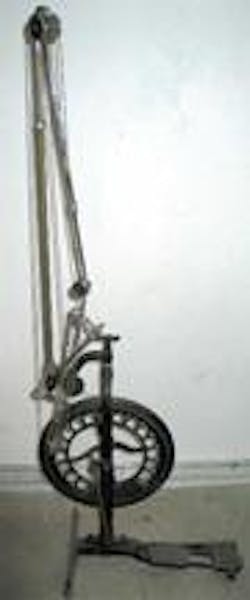Promoting innovation in the corporate workplace
By Edward F. Rossomando, DDS, PhD, MS
“Drill, baby, drill” was a recent campaign slogan. When first I heard these three words, I thought they could be a slogan from the ADA’s annual meeting. Then I thought a more appropriate slogan might be, “Innovate, baby, innovate.” It’s true that our profession has been “drilling” since 1864, when George Harrington invented the first motor powered drill. In our profession, more than 150 years of drilling have repaired a great many diseased teeth and relieved a great deal of human suffering. For this achievement alone, the dental profession can be justly proud.
Not surprisingly, during the more than 150 years of drilling, the equipment used by dentists has evolved. Following Harrington, in 1875 George Green patented an electric drill, and in the early 1900s, G.V. Black invented a foot control for the electrically driven drill. Our equipment remained fairly constant until 1957, when John Borden introduced the high–speed handpiece. Additional advances were introduced in the early 21st century, such as the electric handpiece, the air abrasion, and more recently the laser. Interestingly, it took about 75 years to move from the belt–driven electric handpiece to the high–speed handpiece, but only about 40 to 50 years to move to the laser. Each advance in drilling technology represents the culmination of a very difficult entrepreneurial process, one that began with an idea and culminated with a new product on the market.
Promoting innovation in the workplace
Ideas come from a variety of sources, and the process of generating these ideas is referred to as innovation. To reinforce the importance of innovation, many companies have created environments that foster innovation. Whether these think tanks are called “skunk works” or some other name, the purpose of them is to promote the innovation process to ensure the continued evolution of next generation products for manufacture.
Non–judgmental workplace examples
A recent example of creating an environment for innovation is Google. Their headquarters in New York City has achieved some notoriety for what many consider an unorthodox environment. Mention Google corporate headquarters, and images of employees riding around on unicycles along pastel corridors shooting miniature basketballs at strategically placed wastebaskets come to mind and may not be too far from reality.
Creating an environment that promotes innovation is not easy. It takes a lot more than multicolored surroundings. In many cases, innovation is not about the physical space – the number of innovations that have emerged from garages may not be an accident. What is needed is management that creates an atmosphere of tolerance – where employees understand that any idea they present will receive a non–judgmental reception. This does not mean that all ideas will be accepted. On the contrary, it is understood that all ideas must go through a vetting process established by the company. The brightly colored walls and unicycles are daily reminders for employees that management believes in and tolerates a non–judgmental workplace.
Managers may not all be comfortable with a non–judgmental workplace
Not all managers are comfortable with a non–judgmental workplace. Managers need metrics to evaluate employee performance, and documenting competency while riding a unicycle might not be acceptable to a company that must meet Friday’s payroll obligations, or to someone reporting to stockholders. Although some innovations are ephemeral – with many lasting no more than one brainstorming session – metrics have been developed to track the success of efforts in this area. Some evaluate individual employees, while others evaluate the activities of employee teams. Still others evaluate managers and their ability to promote cooperation, their capacity for leadership, and their ability to create trust.
Promoting innovation by creating non–judgmental management
The Center for Research and Education in Technology Evaluation (CRETE), located at the University of Connecticut School of Dental Medicine, studies those variables which create the non–judgmental workplace. On the basis of these studies, guidelines have been developed to promote innovation by employees and managers. These guidelines range from selection of employees and managers, to metrics for their evaluation. For a free copy of the CRETE brochure, “Promoting Innovation: Eight Mistakes Companies Make,” e–mail CRETE director Dr. Edward F. Rossomando at [email protected]. Please provide an address suitable for mailing using U.S. mail.

